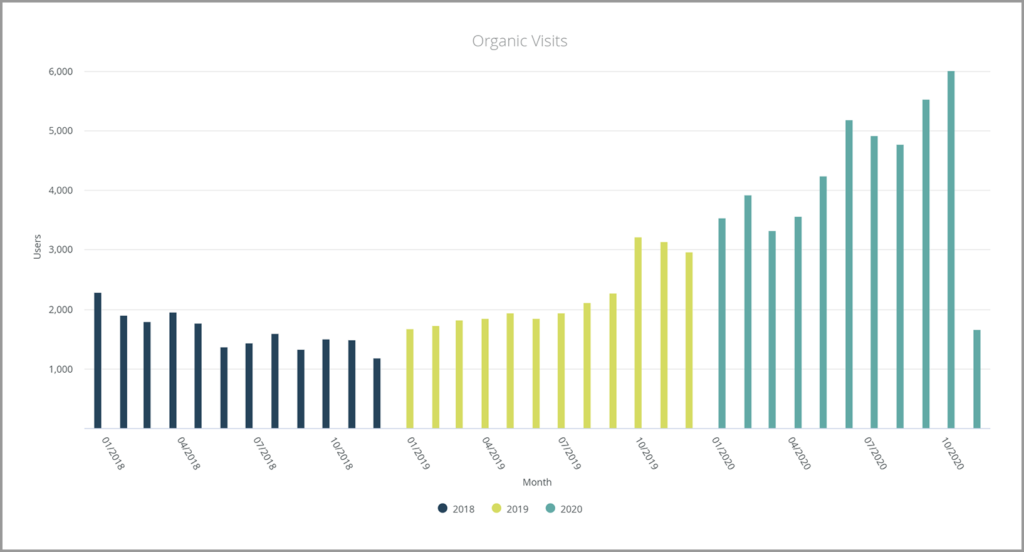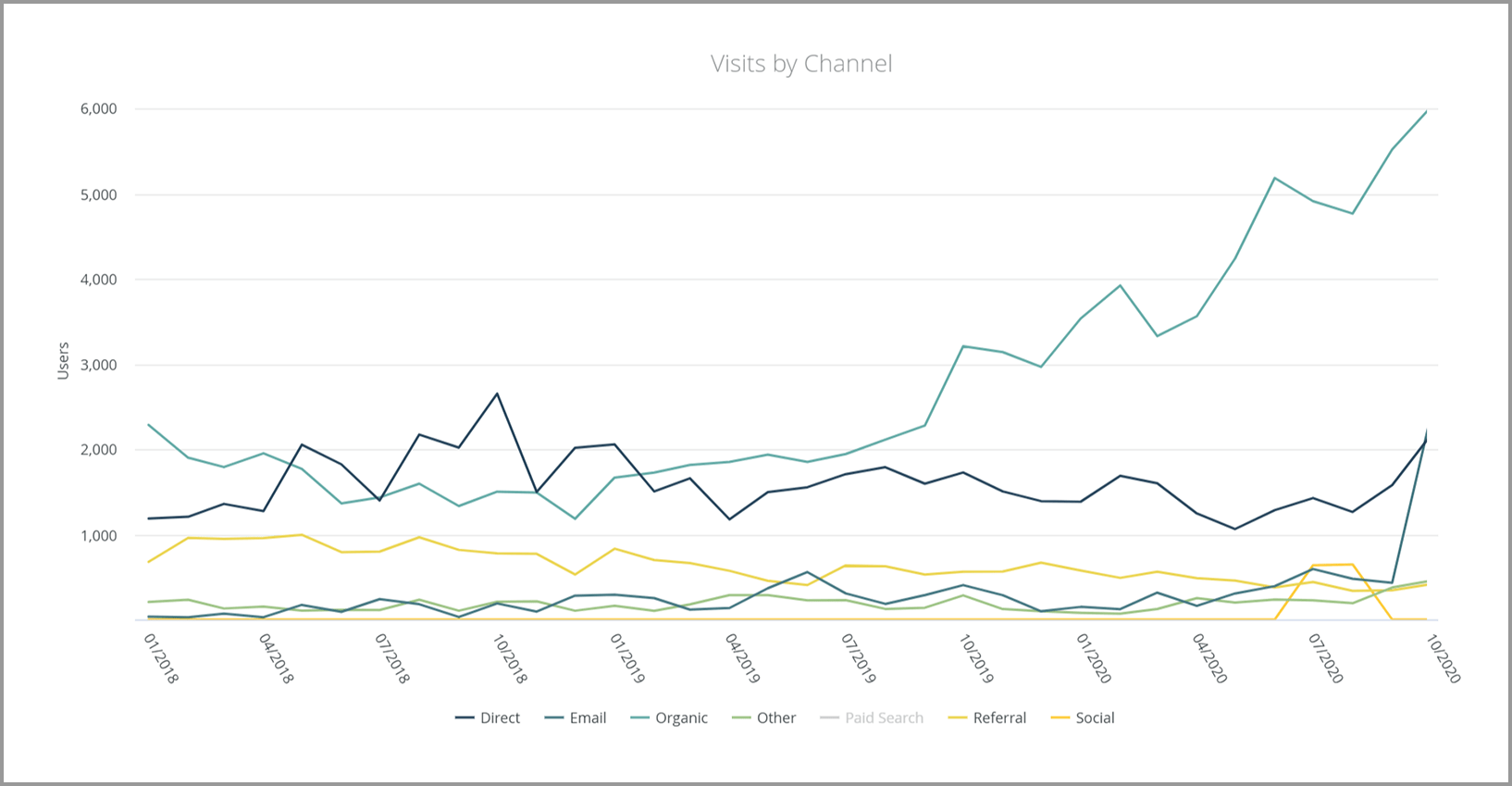Five industry veterans share their insights on what agency leaders need to know about this moment, and how to lead towards positive change.

When it comes to changing the position of your website in search results, SEO (Search Engine Optimization) is a long game. Changes made for optimization can take months to bear fruit and start showing ROI via click-throughs and conversions. When I began my career as a SEO manager, I leveraged an Excel template to document changing search engine results. Over time, I migrated this template to Google Sheets and added custom components that made sense for the goals of specific clients. At one to two hours a month per client, SEO reporting isn’t as onerous as that of fast-moving PPC campaigns, but those hours quickly add up with a full client roster. The introduction of an automated SEO dashboard that gives accurate results on demand is time-saving and eliminates data-entry errors.
In this blog post we delve into four key dashboard components that every SEO manager should use in their dashboards to track their progress.

Overview:
The most essential component you should have displayed on your dashboard is a snapshot of the historical monthly organic traffic for the website. When it comes to organic traffic and SEO, slow, steady change is common. However, when a major shift happens due to an algorithm change—for example, Google’s October 2019 BERT update—you can see the gain or plummet in traffic clearly.
This simple month-by-month bar chart helps you swiftly identify organic traffic trends and changes as they happen. Additionally, a simplified bar chart can provide an overall, year-to-year view of SEO campaign effectiveness:


Overview:
Focusing on channel segmentation, this dashboard offers clear insights into the volume of traffic for each originating method. It allows you to see, at a glance, how well different promotion methods have resonated with your audience.
For example, a large social push bumped the yellow Social line significantly in July and August 2020, illustrating the effectiveness of that campaign. The teal Organic line shows considerable traffic gains over the three-year period, as the content gains position and popularity in the search engine results pages (SERPs).

Overview:
This dashboard component often causes panic because the common perception of Bounce Rate is that higher rates are bad. Yoast’s Annelieke van den Berg explains that having a high bounce rate can mean one of three things:
In this particular dashboard example, Bounce Rate increases with the amount of content on the blog that ranks in search results. Since we know from our other SEO dashboard components that the site is well-regarded in the SERPs and gaining in authority, option #3 (the page answers the visitor’s query) is the most likely conclusion.
However, this dashboard component also indicates where your team can make user experience improvements to the site to increase the interactions and lower the Bounce Rate.

Overview:
As illustrated by the first two SEO dashboard components, the organic traffic for this example site is quite healthy. This visualization, though, reveals that the conversion rate for organic traffic is at 0.8%, which indicates there is work to be done with regards to calls-to-action.
While Conversion Rate Optimization (CRO) isn’t necessarily a part of a SEO manager’s day, the two jobs do go hand-in-hand. What is a good conversion rate? It varies significantly depending on your industry and the type of content. However, Neil Patel says it best:
“What is a good conversion rate? One that’s better than the rate at which you’re converting prospects today. It’s that simple.”
Many people frequently ask me if SEO is worth pursuing. The slow turnaround and amount of effort SEO requires often gives it a negative reputation. This negative spin is why I advocate the consistent use of a SEO dashboard: it takes long horizon reports to show the trends, trajectories, and ROI.
(It should also be noted that, thanks to tailored search results, typing your keywords into a search engine and judging its position is inconclusive.)
It is especially important for SEO managers to document a starting point for their work, and continuously track and record the trajectory of their search engine results. This is where an automated SEO dashboard becomes a key reporting tool for SEO managers.
~
Our universal reporting and analytics technology is instrumental in driving consistent growth for marketing teams large and small. See for yourself how powerful it can be.